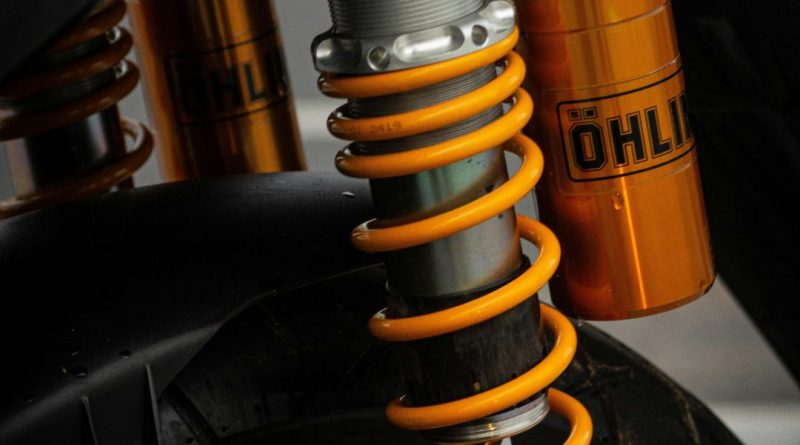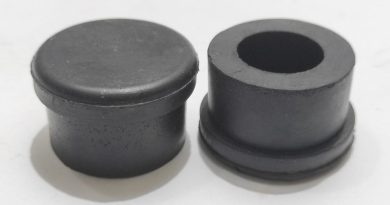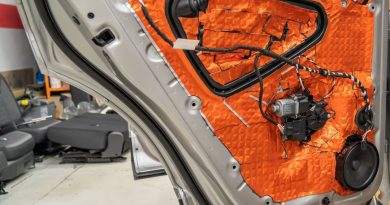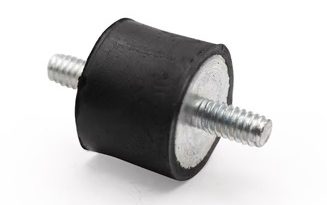Top Benefits of Vibration-Damping Sandwich Mounts With Studs
Are you looking for effective solutions to manage unwanted vibrations in your industrial applications? Vibration-damping sandwich mounts with studs play a vital role in providing essential support and stability while significantly reducing these unwanted vibrations. This article highlights the benefits and applications of these mounts, compares them with other vibration isolation solutions, and offers installation tips for optimal performance. Additionally, I will share my personal experiences and insights from industry professionals to enhance the article’s credibility.
Understanding Vibration-Damping Sandwich Mounts with Studs
Vibration-damping sandwich mounts with studs are specialized solutions designed to absorb and reduce vibrations from machinery and equipment. They consist of layers of elastomeric materials sandwiched between two rigid plates, and the addition of studs allows for easy installation and secure attachment to machinery and structures.
Construction of Vibration-Damping Sandwich Mount
These mounts include several key components:
Elastomeric Material: The core material, often rubber, absorbs vibrations. Adjusting the hardness and composition of the elastomer meets specific application needs.
Top and Bottom Plates: These rigid plates, usually metal, provide structural integrity and evenly distribute the load across the elastomeric material, enhancing performance and durability.
Studs: Embedded studs allow for easy mounting, providing a secure attachment to both the equipment and the foundation. This design simplifies installation and keeps the mount firmly in place during operation.
How They Work
A vibration-damping sandwich mount converts kinetic energy from vibrations into heat, which dissipates over time. When machinery operates, it generates vibrations that can spread through surrounding structures, potentially causing damage. These mounts absorb vibrations, preventing them from affecting adjacent equipment or structures.
Key Advantages of Using Vibration Damping Sandwich Mounts
Using vibration damping sandwich mounts offers many advantages, making them a preferred choice in various applications.
Enhanced Vibration Isolation
These mounts significantly reduce vibrations. By isolating machinery from surrounding structures, they maintain equipment integrity and improve overall performance. This isolation is crucial in sensitive environments, like laboratories or hospitals, where minor vibrations can disrupt operations.
Improved Equipment Longevity
Vibrations can lead to wear and tear on machinery. By minimizing these vibrations, vibration-damping sandwich mounts extend equipment lifespan, lowering maintenance costs and downtime. This durability is especially beneficial for industries that rely on heavy machinery, where replacement costs can be high.
Noise Reduction
These mounts also reduce noise levels. Vibrations often create sound that can disrupt workplaces. By dampening vibrations, sandwich mounts contribute to a quieter work environment, enhancing employee comfort and productivity.
Easy Installation
The design of sandwich mounts with studs simplifies installation. Installers can quickly secure the mounts to both machinery and the foundation without complex tools or extra hardware. This ease of installation saves time and reduces labor costs.
Applications Across Industries: Where to Use Sandwich Mounts
Vibration-damping sandwich mounts with studs are versatile components used in various industries. Their ability to absorb vibrations makes them ideal for many applications.
Manufacturing
In manufacturing, machinery often operates at high speeds, creating significant vibrations. Sandwich mounts isolate these vibrations, ensuring smooth and efficient operation. Common applications include:
- CNC machines
- Presses
- Conveyors
Automotive
In the automotive sector, these mounts reduce vibrations in engines and other critical components. By minimizing vibrations, they enhance vehicle comfort and performance. Applications include:
- Engine mounts
- Suspension systems
- Chassis components
Aerospace
The aerospace industry relies on vibration-damping solutions to protect sensitive equipment. Sandwich mounts are used in:
- Aircraft engines
- Control systems
- Ground support equipment
Marine
Marine applications also benefit from these mounts. Ships and boats experience considerable vibrations from engines and rough waters. Sandwich mounts ensure safety and comfort for passengers and crew, commonly used in:
- Engine mounts
- Equipment supports
- Deck fittings
HVAC Systems
In HVAC systems, vibration-damping sandwich mounts reduce noise and vibrations from compressors and fans, improving system efficiency and user comfort.
|
Advantage/Comparison |
Vibration-Damping Sandwich Mounts | Vibration Isolation Pads | Spring Mounts | Active Vibration Control Systems |
| Vibration Damping Effectiveness |
High |
Moderate |
Moderate | Very High |
|
Durability |
High | Moderate | High |
High |
|
Installation Complexity |
Easy | Easy | Moderate to Complex |
Complex |
| Maintenance Needs | Minimal |
Minimal |
Moderate |
High |
|
Cost |
Moderate to High | Low | Moderate | High |
| Load Capacity |
High |
Low to Moderate |
High | High |
|
Space Requirements |
Compact | Compact | Larger |
Larger |
| Best Suited For | Heavy-duty applications | Light-duty applications | Heavy-duty applications |
Critical applications |
Comparing Vibration-Damping Sandwich Mounts with Other Solutions
When selecting a vibration isolation solution, it is essential to compare vibration-damping sandwich mounts with other options available.
Vibration Isolation Pads
Vibration isolation pads are popular for minimizing vibrations. However, they may not provide the same level of damping as sandwich mounts. While pads are simpler and often cheaper, they lack the durability and structural integrity of sandwich mounts, especially in heavy-duty applications.
Spring Mounts
Spring mounts are another alternative for vibration isolation. They can be effective but typically offer less control over vibration frequencies. Additionally, spring mounts can be complex to install and require more space than sandwich mounts.
Active Vibration Control Systems
Active vibration control systems use sensors and actuators to counteract vibrations. While these systems can be highly effective, they are also more expensive and require ongoing maintenance. In contrast, vibration-damping sandwich mounts are passive solutions that need minimal upkeep, making them more accessible for many businesses.
Addressing Limitations and Counterarguments
While vibration-damping sandwich mounts offer numerous benefits, it’s essential to acknowledge potential drawbacks. For instance, in extremely high-load applications, the lifespan of elastomeric materials could be a concern. Additionally, if the mounts are not correctly sized or installed, their effectiveness can be compromised. However, with proper selection and installation, these drawbacks can often be mitigated, making them a reliable choice for many applications.
Installation Tips for Optimal Performance
To ensure that vibration-damping sandwich mounts with studs perform effectively, proper installation is critical. Here are some best practices to follow.
Pre-Installation Checks
Conduct thorough checks of the equipment and mounting surface before installation. Ensure surfaces are clean, level, and free from debris. Irregularities can affect mount performance.
Correct Mount Size and Type
Select the right size and type of sandwich mount based on the equipment’s weight and operating conditions. Manufacturers provide guidelines for load capacities and recommended applications. Using the correct mount ensures optimal vibration isolation.
Proper Orientation
Ensure that vibration-damping sandwich mounts are oriented correctly during installation. Misalignment can lead to uneven load distribution, reducing effectiveness. Follow the manufacturer’s instructions regarding orientation and positioning.
Torque Specifications
When securing the mounts with studs, adhere to recommended torque specifications. Over-tightening can damage the mount, while under-tightening can lead to instability. Use a calibrated torque wrench for accurate installation.
Regular Inspections
After installation, conduct regular inspections to check for wear and tear. Over time, elastomeric materials can degrade, impacting performance. Early detection of issues allows for timely replacements and maintenance.
Vibration-damping sandwich mounts with studs are invaluable in various industries. They effectively isolate vibrations, reduce noise, and enhance equipment longevity. Their ease of installation and versatility make them a preferred choice for numerous applications. Understanding their advantages and proper installation techniques enables businesses to optimize machinery performance and ensure a safer, more efficient working environment.
In manufacturing, automotive, aerospace, or HVAC systems, vibration-damping sandwich mounts provide significant benefits that improve operational efficiency. Embracing these solutions can lead to better equipment performance and longevity, driving positive results for businesses across diverse sectors. By incorporating expert insights and personal experiences, we can appreciate the practical implications of these models in real-world applications.



